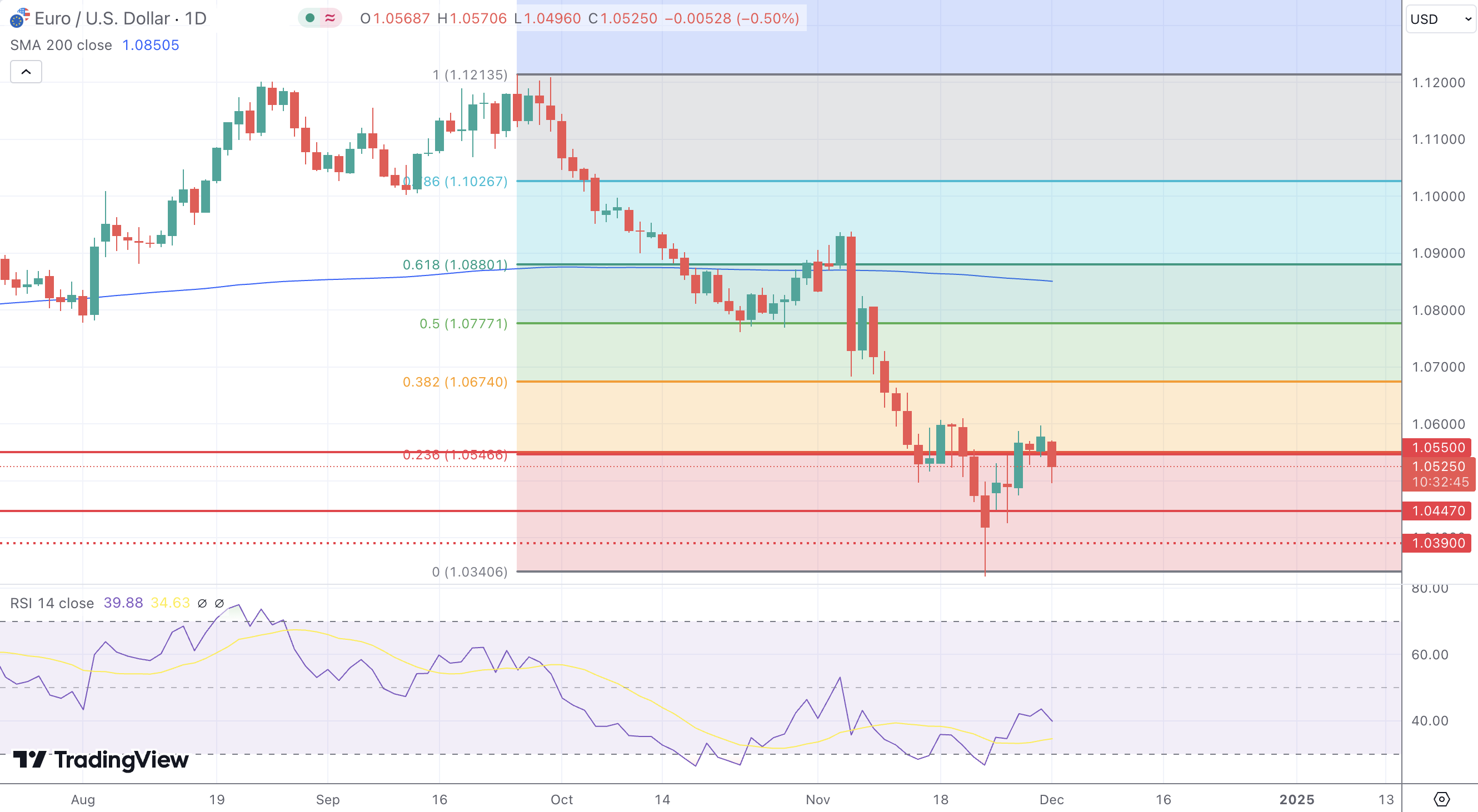Key Takeaways
- The EUR/USD pair is under bearish pressure, trading near the 1.0500 level, influenced by a strengthening U.S. dollar and weaker Eurozone economic indicators.
- Technical analysis indicates immediate support at 1.0447, with resistance at 1.0550 and the 200-day SMA near 1.0866.
- Divergent economic performances between the Eurozone and the U.S. suggest a potential dovish stance from the ECB and a hawkish approach from the Federal Reserve, impacting the pair’s dynamics.
- Upcoming events, including ECB President Lagarde’s speech and U.S. PMI data releases, are critical in determining the EUR/USD pair’s direction in the coming week.
Market Dynamics and Recent Performance
Over the past week, the EUR/USD pair has experienced a downward trajectory, influenced by a combination of economic indicators and market sentiment. The euro has faced selling pressure, particularly as it approached the 1.0500 level, a critical psychological threshold. This decline is attributed to the euro’s struggle to maintain gains amid a strengthening U.S. dollar.
The U.S. dollar’s resilience is underpinned by robust economic data, notably the ISM Manufacturing PMI, which rose to 47.7 from the previous 46.5, indicating an improvement in factory activity. Additionally, the ISM Manufacturing Prices Index increased to 55.2, reflecting mounting inflationary pressures. These developments have bolstered the dollar, exerting further pressure on the euro.
Technical and Fundamental Influences
From a technical standpoint, the EUR/USD pair has breached key support levels, signaling potential for further downside movement. The pair’s decline below the 1.0500 mark suggests a bearish sentiment, with immediate support identified at 1.0447, the recent low. If this level is breached, the next significant support is at 1.0390. On the upside, resistance is observed at 1.0550, followed by the 200-day Simple Moving Average (SMA) near 1.0866, which serves as a critical barrier for any potential upward correction.
Fundamentally, the divergence between the Eurozone and U.S. economic performances continues to influence the pair. The Eurozone is grappling with subdued economic indicators, while the U.S. economy exhibits signs of resilience. This disparity has led to expectations that the European Central Bank (ECB) may adopt a more dovish stance, whereas the Federal Reserve could maintain a hawkish approach, further strengthening the dollar against the euro.
Looking Forward
In the upcoming week, market participants will closely monitor several key events and data releases. The ECB President Christine Lagarde’s speech is anticipated to provide insights into the central bank’s monetary policy outlook amid the current economic challenges. Additionally, the release of U.S. PMI data will offer further clarity on the health of the manufacturing sector, potentially influencing the Federal Reserve’s policy decisions. These events are expected to play a pivotal role in shaping the EUR/USD pair’s trajectory in the near term.


